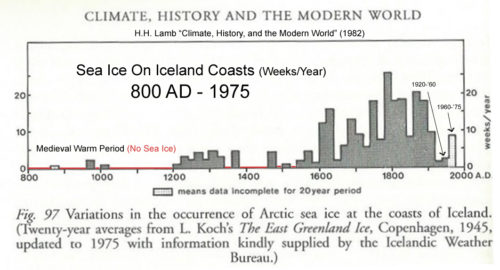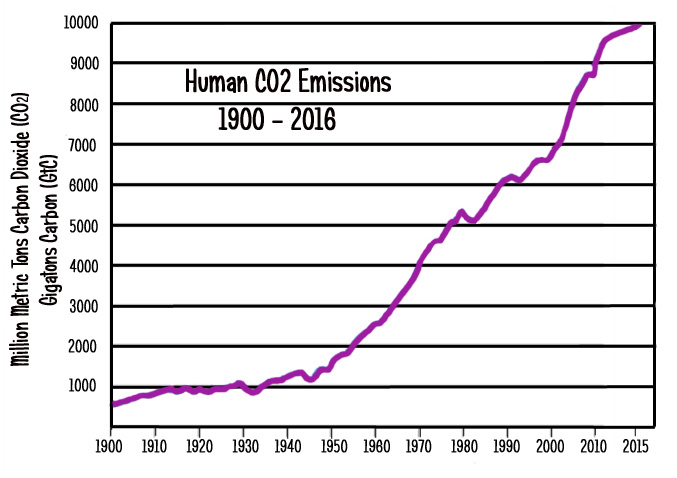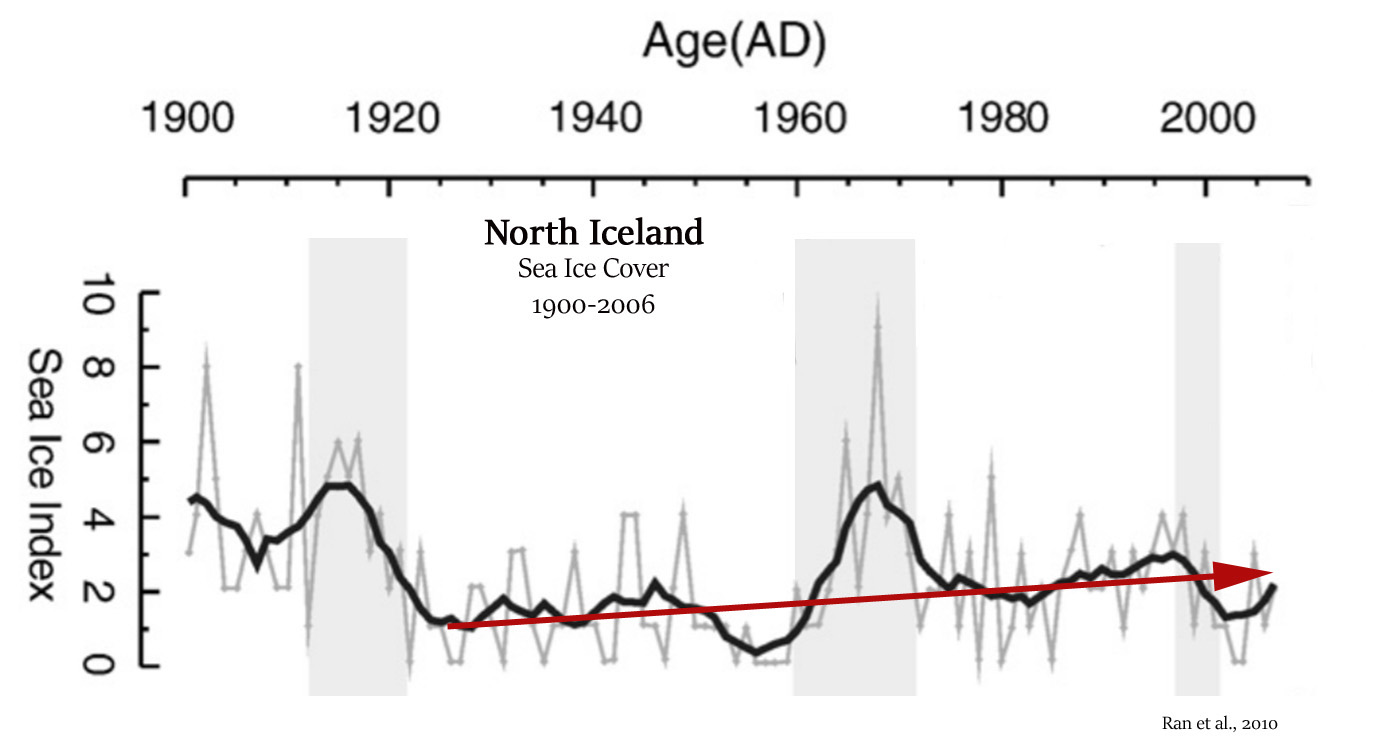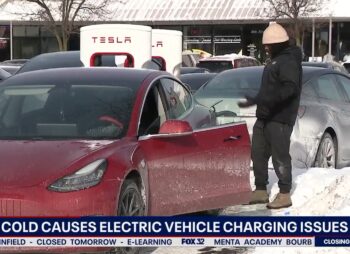The CO2-Controlled Arctic Sea Ice Narrative Continues To Crumble

In his seminal 1982 book Climate, History, and the Modern World, the renown climatologist Dr. H.H. Lamb revealed that sea ice in the subarctic and Arctic regions was much less extensive during the Medieval Warm Period (9th-13th centuries) compared to today.
For example, records indicate that there were decadal and centennial-scale periods without any sea ice invading any of Iceland’s coasts. These no-ice periods coincided with atmospheric CO2 concentrations of 275 ppm, which is about 130 ppm less than today’s calculated CO2 values.
Considering climate models are predicated on the presumption that the higher the CO2 concentration, the greater the loss of sea ice, these long-term trends strongly suggest that CO2 concentration changes are not the modulators of polar sea ice changes they are claimed to be.
After all, for the last 35 years, Southern Hemisphere sea ice extent has been steadily rising (Comiso et al., 2017), and during the last 90 years, Arctic sea ice has undergone an oscillation rather than a linear recession (Connolly et al., 2017).
Arctic Sea Ice Was Less Extensive Before Man-Made CO2 Emissions Began Rising (~ the 1950s)
Anthropogenic CO2 emissions really didn’t begin rising until about 1950.
Since the 1950s, however, there has been a slight overall sea ice extent increase in many regions of the Arctic and subarctic. For example, sea ice cover north of Iceland was lower than now during the 1925-1960 period — when CO2 concentrations hovered between 310 and 320 ppm.
In Southwest Greenland, the overall sea ice concentration has grown dramatically since the 1930s. The modern (2010) extent is no lower than it was during several decadal-scale periods in the 18th century.
Read rest at No Tricks Zone






















And the Arctic Ice Cap would be gone by now if you cared to listen to Al Bores mindless babble or recite is idiotic poem